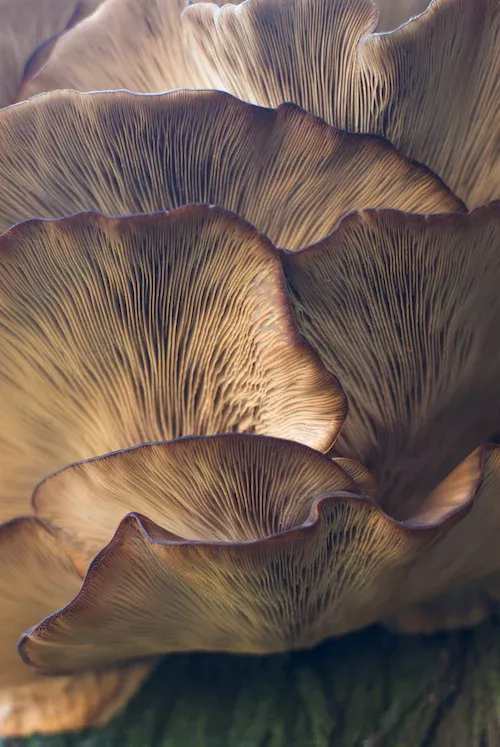How Long Can You Freeze or Refrigerate Grain Spawn?
Grain spawn is a food product, and it can be susceptible to spoilage if not stored properly. Knowing the proper storage techniques for grain spawn is essential for successful mushroom cultivation. In this article, we will discuss how long grain spawns can be stored in the freezer or refrigerator and the best practices for doing so.
In general, you can store grain spawns in the refrigerator for up to 2–3 months or in the freezer for up to 6–12 months. However, it's important to note that the longer you store the grain spawn, the less viable it becomes, which may affect its ability to colonize substrate and produce mushrooms.
Optimize the shelf life of grain spawn and store it properly. Below are our tips and recommendations for freezing and refrigerating grain spawn to ensure its viability.
Summary
- The length of time that you can freeze or refrigerate grain spawn will depend on several factors, such as the type of grain used, the age of the grain, and the storage conditions.
- To optimize the shelf life of grain spawn, it's important to store it in airtight containers in a cool, dry place, away from direct sunlight or heat sources.
- It's also recommended to use freshly made or recently purchased grain spawns to ensure the highest quality and best results.

On this page:
Refrigerate Grain Spawn for 2 to 3 Months
Grain spawn may normally be kept refrigerated for 2–3 months. Remember to use your grain spawn within 2-3 months to ensure the highest quality and best results. It's crucial to remember that grain spawn loses viability the longer it's stored, which might interfere with its capacity to colonize substrate and grow mushrooms.
Refrigerating grain spawn is a great way to extend its shelf life. Here are the steps to refrigerate grain spawn properly:
- Transfer the grain spawn into a clean, airtight container. You can use glass jars or plastic containers with tight-fitting lids.
- Label the container with the date and type of grain spawn.
- Place the container in the refrigerator. The ideal temperature for storing grain spawn is between 36-42°F (2-6°C).
- Avoid stacking or crushing the container as this may damage the grain spawn and reduce its viability.
- Check the container periodically for any signs of contamination or moisture buildup.
- When you're ready to use the grain spawn, allow it to come to room temperature before inoculating your substrate.
You can freeze and refrigerate grain spawn to extend its shelf life. Grain kind, grain age, and storage conditions are just a few of the variables that can affect how long grain spawn may be frozen or refrigerated.
Freeze Grain Spawn for 6 to 12 Months
Freezing grain spawn is another effective method to extend its shelf life. Remember to use your frozen grain spawn within 6-12 months to ensure the highest quality and best results. Here are the steps to freeze grain spawn properly:
- Transfer the grain spawn into a clean, airtight container. You can use glass jars or plastic containers with tight-fitting lids.
- Label the container with the date and type of grain spawn.
- Place the container in the freezer. The ideal temperature for storing grain spawn is below 0°F (-18°C).
- Avoid stacking or crushing the container as this may damage the grain spawn and reduce its viability.
- Check the container periodically for any signs of freezer burn or moisture buildup.
- When you're ready to use the grain spawn, thaw it out slowly in the refrigerator or at room temperature. Do not thaw it out in the microwave or hot water, as this may damage the grain spawn.

Additional Strategies to Extend the Shelf Life of Grain Spawn
There are several other ways to optimize the shelf life of grain spawns besides refrigeration and freezing. Here are some tips:
1. Store the grain spawn in a cool, dry place away from direct sunlight or heat sources
Choose a cool, dry location to store your grain spawn, such as a closet or pantry. Store the container in a cool, dry location away from direct sunlight or heat sources. The ideal temperature for storing grain spawn is between 50-70°F (10-21°C).
2. Use airtight containers to prevent contamination and moisture buildup
Use airtight containers to store the grain spawn. Glass jars or plastic containers with a tight-fitting lid work well. Check the container periodically for any signs of contamination or moisture buildup.
3. Use fresh or recently purchased grain spawn
The fresher the grain spawn, the higher its viability.
-
Check the expiration date or production date. Look for grain spawn that has a production date or expiration date marked on the packaging. Choose the freshest option available.
-
Buy from a reputable supplier. Purchase grain spawn from a reputable supplier with a good reputation for quality and customer service. Read reviews and ask for recommendations from other mushroom growers.
-
Look for visual signs. Visually inspect the grain spawn to check for any signs of contamination or moisture buildup. The grain spawn should appear dry and free from any mold, discoloration, or foul odors.
-
Choose high-quality grain. Look for grain spawn made from high-quality grain, such as organic or non-GMO grain. High-quality grain will produce a healthier and more viable grain spawn.
-
Consider the shipping time. If ordering online, consider the shipping time and choose a supplier that offers fast and reliable shipping to ensure that the grain spawn arrives fresh.
4. Handle the grain spawn with clean hands and in a clean environment
- Wash your hands thoroughly with soap and warm water before handling the grain spawn.
- Use clean, sterilized equipment when handling the grain spawn, such as gloves, a face mask, and a clean work surface.
- Sterilize the work area and any equipment used with a disinfectant or by wiping with isopropyl alcohol.
- Open the container of grain spawn carefully to avoid contamination. Avoid touching the inside of the container or the grain spawn with your hands.
- If transferring the grain spawn to another container, use sterilized equipment and work in a clean environment.
- After handling the grain spawn, dispose of any used equipment and clean the work area thoroughly to prevent contamination.
By following these steps, you can handle the grain spawn with clean hands and in a clean environment, reducing the risk of contamination and ensuring the best results for your mushroom cultivation.

5. Use proper inoculation techniques to prevent contamination and ensure even colonization of substrate
For the best results in your mushroom cultivation, you can inoculate your substrate properly, preventing contamination and ensuring even colonization by the grain spawn. Here are the steps to inoculate your substrate properly:
-
Sterilize your tools and work area. Use sterilized equipment and work in a clean environment to prevent contamination. Wipe your work surface and equipment with alcohol or another sterilizing solution.
-
Prepare your substrate. Prepare your substrate according to the instructions for your specific mushroom species. Make sure it is fully cooled and dry before inoculating.
-
Prepare your grain spawn. Prepare your grain spawn by shaking the container to evenly distribute the spawn and break up any clumps.
-
Inoculate your substrate. Use a sterile spoon or inoculation tool to transfer the grain spawn to your substrate. Space out the inoculation points evenly to ensure even colonization. Avoid touching the inside of the container or the grain spawn with your hands.
-
Seal your container. Seal your container with a sterilized lid or plastic wrap to prevent contamination. Use a breathable filter patch to allow for gas exchange.
-
Incubate your substrate. Incubate your substrate at the appropriate temperature and humidity level for your specific mushroom species. Check on it regularly for signs of contamination or growth.



